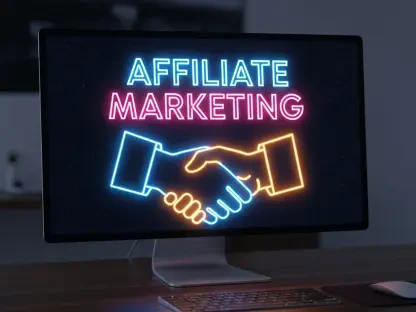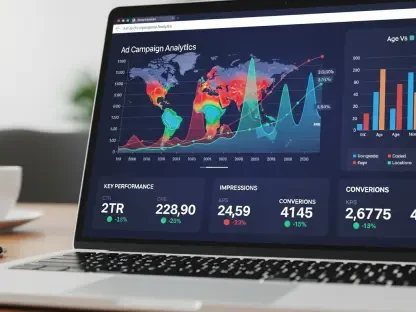In the crowded and rapidly evolving field of cybersecurity, companies strive to stand out and gain traction amidst fierce competition. They can achieve this differentiation by strategically integrating three critical digital marketing strategies: SEO, paid advertising, and content marketing. When combined effectively, these tactics help establish a powerful brand presence, build authority, educate audiences, and foster relationships that catalyze growth. This article delves into how cybersecurity companies can employ these strategies synergistically to carve out a unique market position.
The Foundation of Digital Visibility: SEO
Importance of SEO in Cybersecurity
At the core of digital visibility is a well-crafted SEO (Search Engine Optimization) strategy. Research indicates that approximately 68% of online experiences commence with a search engine, underlining the importance of being highly visible in search results. For cybersecurity firms, the ability to rank prominently in search engine results can be pivotal in attracting new clients. Thus, SEO remains foundational for achieving online presence and differentiation.
Precision in Keyword Relevance
In the B2B (Business-to-Business) sphere of cybersecurity, keyword relevance demands greater precision compared to B2C (Business-to-Consumer) contexts, as potential clients often engage in detailed technical research. Utilization of long-tail keywords that cater to specific needs, such as “cybersecurity solutions for financial institutions” or “compliance monitoring tools for healthcare,” is particularly beneficial. According to Ahrefs, targeting low competition but specific keywords can drive more qualified leads, especially in niche segments. Consequently, cybersecurity firms increase their chances of reaching high-value prospects with significant purchasing intent by focusing on these long-tail keywords.
On-Page Optimization and Trust Building
On-page optimization is another essential SEO component. This includes enhancing page titles, meta descriptions, headers, and website structure to ensure it is both user-friendly and search engine-friendly. For example, a clear and intuitive navigation structure aids both users and search engines in comprehending the website, positively impacting search rankings. Moreover, for cybersecurity companies, building trust is crucial. Search engines now incorporate user experience and site security as vital ranking factors. Therefore, Google prioritizes websites with secure HTTPS encryption, implying that cybersecurity firms must ensure their websites are safe and fast to meet these criteria.
Instant Visibility through Paid Advertising
Advantages of Paid Advertising Platforms
Paid advertising offers an avenue for gaining instant visibility, complementing the gradual benefits of SEO. Through platforms like Google Ads and LinkedIn Ads, cybersecurity companies can quickly generate traction. These platforms offer distinct advantages: Google Ads captures demand from active searchers, while LinkedIn Ads is effective for targeting specific industries, job roles, and company sizes. With 65% of B2B marketers reporting LinkedIn as their most successful platform for paid ads, its significance in cybersecurity marketing becomes evident.
Target Audience and Messaging
To optimize paid advertising efforts, cybersecurity firms must clearly define their target audience and understand their pain points. For instance, a company specializing in AI-powered threat detection might target CISOs (Chief Information Security Officers) and IT directors with ads emphasizing the benefits of AI in cybersecurity. By having a well-defined audience and targeted messaging, companies can ensure their advertising spend is focused on relevant decision-makers with a demonstrable need for their services.
Enhancing Landing Page Experience
The effectiveness of paid campaigns also hinges on the landing page experience. An impactful ad must direct users to an informative, trustworthy, and conversion-focused landing page. Essential elements include clear messaging, proof points like case studies or client testimonials, and a prominent call-to-action guiding visitors toward actions like contacting sales or scheduling a demo. Employing Conversion Rate Optimization (CRO) techniques, such as A/B testing different landing page components, helps improve the return on ad spend by increasing visitor conversion rates.
Building Authority with Content Marketing
Top-of-Funnel Content
Content marketing serves as a vehicle for building trust and authority. Producing high-quality, insightful content enables cybersecurity brands to showcase their expertise and earn the trust of potential clients. Statistics show that 82% of B2B buyers review a minimum of five pieces of content from a potential vendor before making a purchase decision. For cybersecurity firms, this translates into developing a content strategy that educates, informs, and builds confidence.
Bottom-of-Funnel Content
Effective content marketing spans both top-of-funnel and bottom-of-funnel stages. At the top of the funnel, blog posts, white papers, and thought leadership articles on topics such as “emerging cybersecurity threats” or “how to prepare for GDPR audits” can attract attention during the awareness stage. Such content allows cybersecurity firms to highlight their expertise and cultivate a sense of authority and trust. Consistent blogging can generate 67% more leads compared to companies that do not engage in blogging, marking it as a crucial aspect of any content strategy.
In-Depth Resources for Conversion
Bottom-of-funnel content focuses on driving conversions by providing in-depth resources tailored to specific needs, like case studies, detailed guides, and webinars. Cybersecurity firms can address common pain points and directly connect their solutions to the needs of potential clients at this stage, offering clear calls-to-action that drive engagement and conversions. High-quality, specific content at the bottom of the funnel reassures prospects of the firm’s capabilities, encouraging them to take the next step in the buying process.
In the competitive and rapidly changing realm of cybersecurity, companies are constantly looking for ways to differentiate themselves and gain market share. Success in carving out a unique market position can be achieved through the strategic combination of three essential digital marketing strategies: SEO, paid advertising, and content marketing. Each strategy alone is powerful, but when cybersecurity firms integrate them effectively, they create a formidable brand presence, establish authority, educate their audience, and build relationships that drive growth. SEO helps improve search engine rankings, making it easier for potential clients to find the company. Paid advertising offers immediate visibility and targeted outreach to prospective customers. Meanwhile, content marketing, through articles, blogs, and whitepapers, educates the audience and demonstrates industry expertise. This article examines how cybersecurity companies can use these strategies together to set themselves apart in a crowded market.









